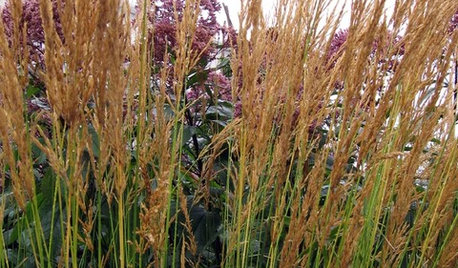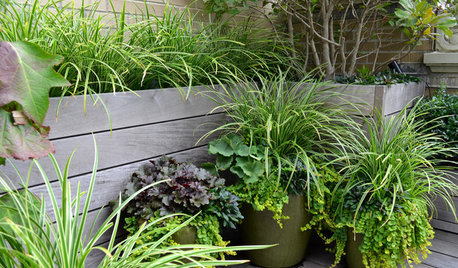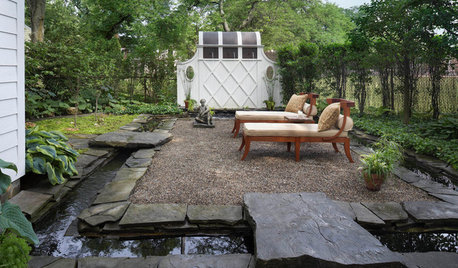How much grass do I need to clear around my tomatoes?
gardningscomplicated
14 years ago
Related Stories

EDIBLE GARDENSSummer Crops: How to Grow Tomatoes
Plant tomato seedlings in spring for one of the best tastes of summer, fresh from your backyard
Full Story
INSPIRING GARDENSInside Houzz: A Waterfront Property Ditches the Grass for a Garden
New drought-tolerant plantings and outdoor gathering spaces help this California backyard take in the view without wasting space or water
Full Story
LANDSCAPE DESIGNIs It Time to Consider Fake Grass?
With more realistic-looking options than ever, synthetic turf can be a boon. Find the benefits and an installation how-to here
Full Story
DECORATING GUIDESGo for the Green: Artificial Grass Surprises, Inside and Out
Synthetic turf springs up on patios, living rooms, furniture and walls. Basement golf, anyone?
Full Story
LIFEThe Polite House: How Can I Tell a Construction Crew to Pipe Down?
If workers around your home are doing things that bother you, there’s a diplomatic way to approach them
Full Story
GOLD FOLIAGEGreat Design Plant: Feather Reed Grass
Use this ornamental grass for height, color, texture and motion in your landscape
Full Story
PLANTING IDEASCreate High-Impact Container Gardens With Grasses
When it comes to adding drama, texture and panache to a pot, these strappy species are hard to beat
Full Story
COLORWelcome Yellow Around Your Home for an Instant Lift
Keep on the sunny side with shades of yellow from buttery and soft to dynamic and bright
Full Story
PATIO OF THE WEEKKoi Glide Around a Tranquil Garden's Moat
This idyllic retreat combines lush plantings, statues and moving water for a serene backyard scene
Full Story
HOMES AROUND THE WORLDHouzz Tour: Family House With a Surprise Around Every Corner
If houses could smile, this 1903 New Zealand villa might have the biggest grin of them all
Full Story


stevesd
jonhughes
Related Discussions
Why do my tomatoes need so much water?!
Q
How much water do you know or feel your grass/shrub needs weekly
Q
how much comfrey would I need to feed my tomatoes?
Q
do I need to mulch my tomatoes? is it OK that they're growing on grass
Q
gardningscomplicatedOriginal Author
gardningscomplicatedOriginal Author
gardener_sandy
jonhughes
gardningscomplicatedOriginal Author
stevesd
gardningscomplicatedOriginal Author
gardningscomplicatedOriginal Author
potterhead2
stevesd
gumby_ct
glib
gardningscomplicatedOriginal Author
curt_grow
gardningscomplicatedOriginal Author
jonhughes
gardningscomplicatedOriginal Author
gardningscomplicatedOriginal Author
homertherat
gardningscomplicatedOriginal Author
homertherat
borderbarb
lavender_lass
gardningscomplicatedOriginal Author
ruthieg__tx
gardningscomplicatedOriginal Author
forpityssake
curt_grow
zeuspaul
gardningscomplicatedOriginal Author
mrdoitall
gardningscomplicatedOriginal Author
mrdoitall
homertherat
gardningscomplicatedOriginal Author
jonhughes
gardningscomplicatedOriginal Author
jonhughes
mrdoitall
opal52
mrdoitall
gardningscomplicatedOriginal Author
mrdoitall
loribee2
kay-jay
gardningscomplicatedOriginal Author
loribee2
gardningscomplicatedOriginal Author